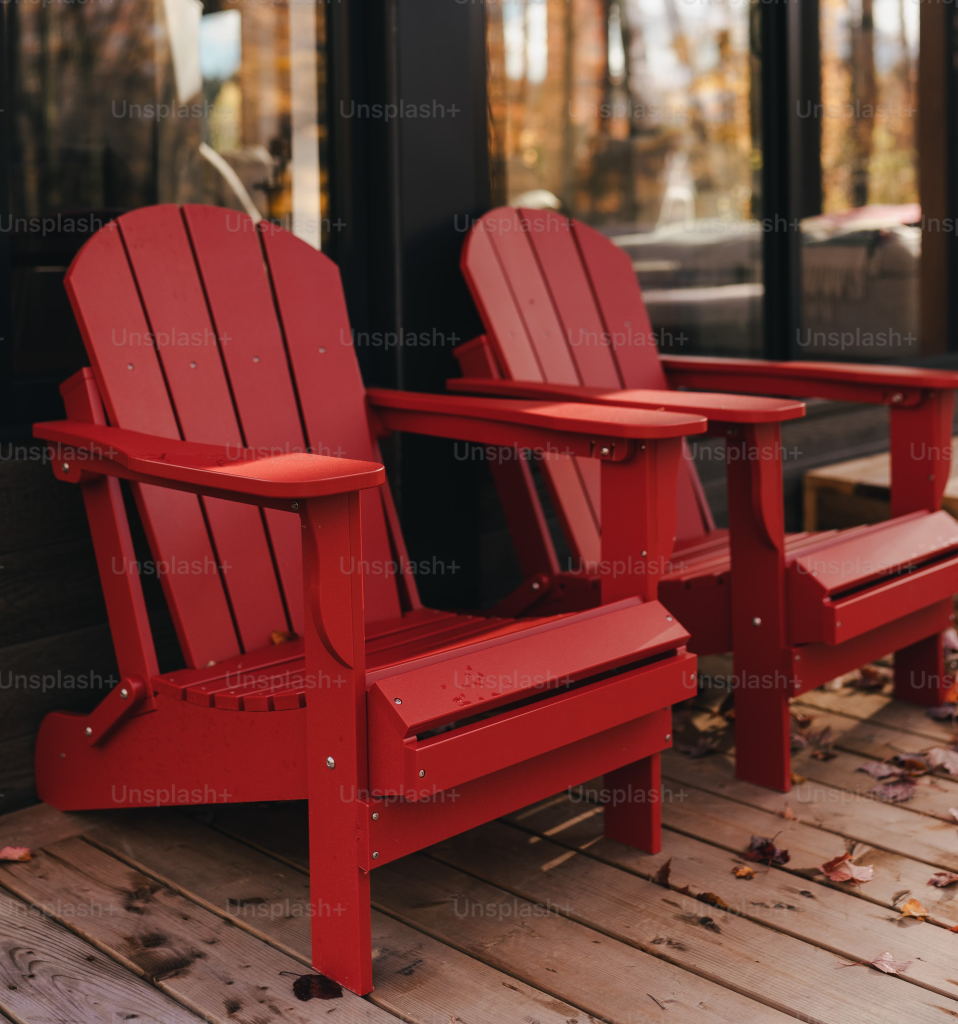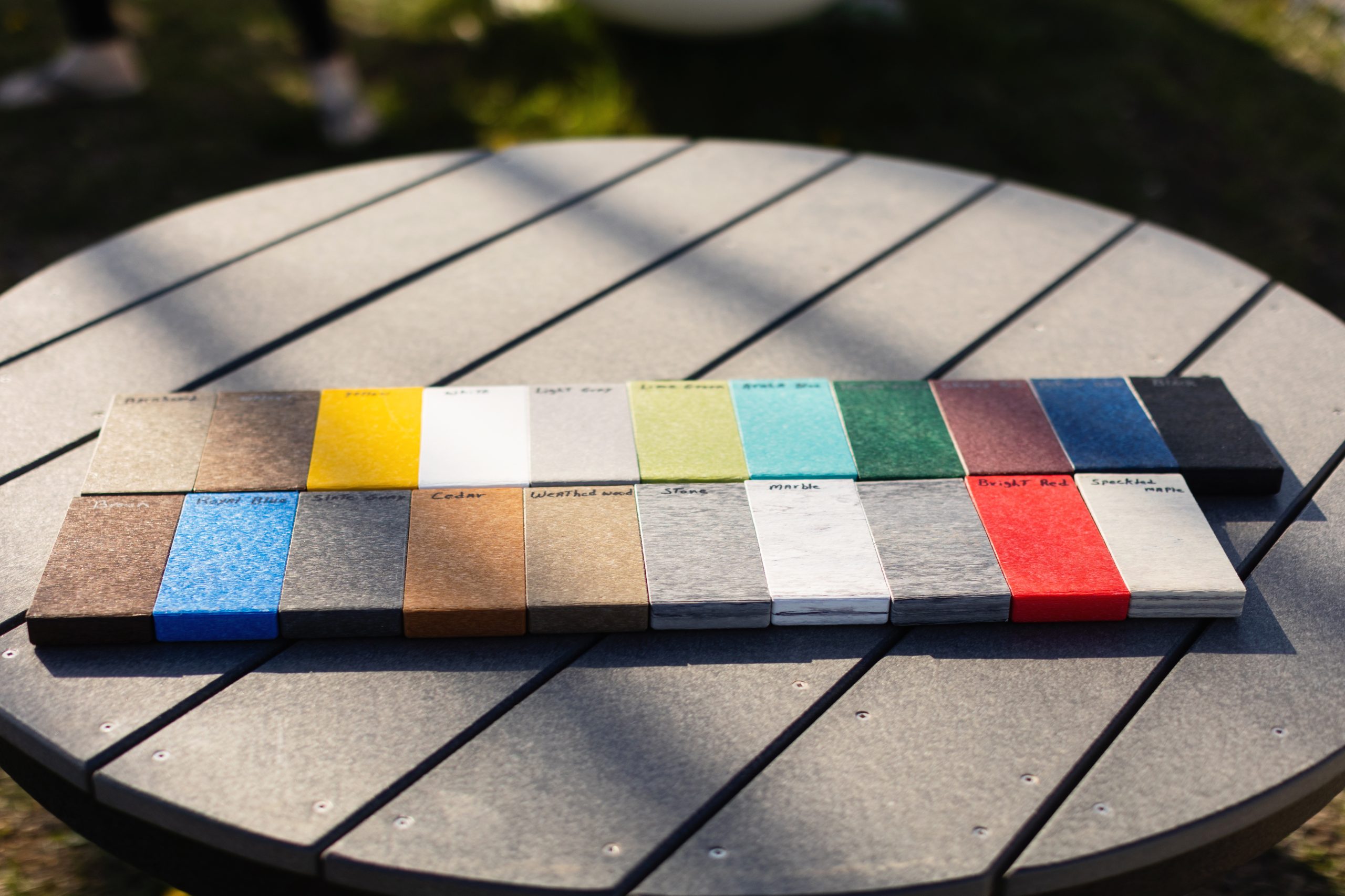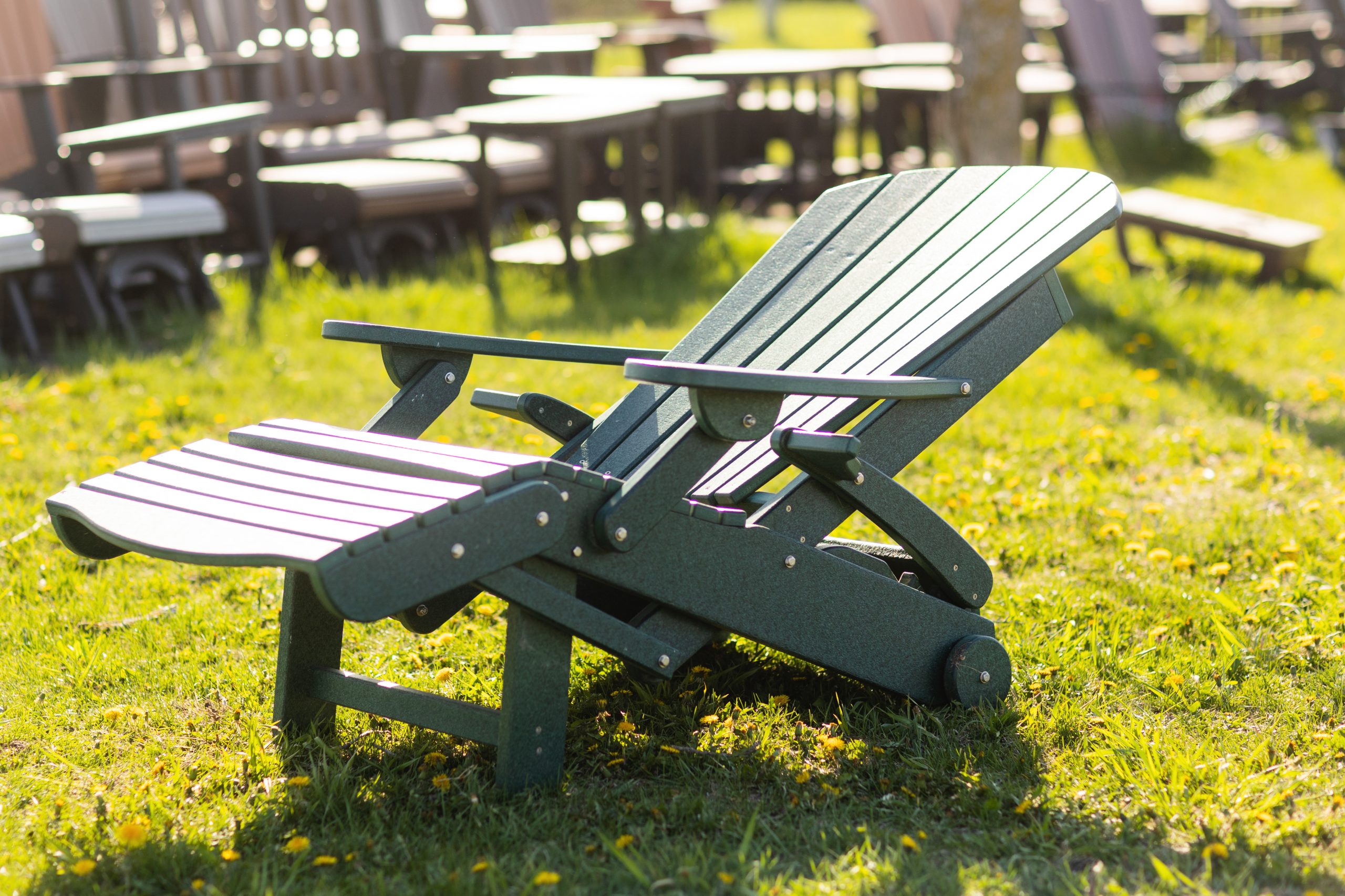When it comes to selecting the best outdoor furniture, many homeowners find themselves choosing between poly outdoor furniture and plastic outdoor furniture. Both options have their unique advantages, but understanding the key differences can help you make an informed decision. Here, we’ll compare these two popular types of outdoor furniture across several important categories.
Durability
Poly outdoor furniture is renowned for its exceptional durability. Made from high-density polyethylene (HDPE), poly furniture is resistant to cracking, fading, and rotting, even when exposed to harsh weather conditions. In contrast, plastic outdoor furniture, typically made from lower-quality plastic, tends to be less durable. It can become brittle and crack over time, especially when exposed to prolonged sunlight and varying temperatures.
Weather Resistance
One of the standout features of poly outdoor furniture is its excellent weather resistance. Whether it’s rain, snow, or intense sunlight, poly furniture can withstand it all without deteriorating. Plastic outdoor furniture, on the other hand, is more susceptible to damage from UV rays and extreme weather conditions. This can result in fading, warping, and a shorter lifespan.
Maintenance and Care
Poly outdoor furniture requires minimal maintenance. A simple wash with soap and water is usually sufficient to keep it looking new. It doesn’t need any special treatments or coatings to maintain its appearance and integrity. Plastic outdoor furniture also requires little maintenance, but its lower durability means it may need to be replaced more frequently, especially if it becomes damaged.
Environmental Impact
Poly outdoor furniture is often made from recycled materials, making it an eco-friendly choice. By choosing poly furniture, you’re not only investing in a durable product but also supporting environmental sustainability. In contrast, plastic outdoor furniture is usually made from non-recycled plastic, contributing to environmental pollution and waste.
Cost and Value
While poly outdoor furniture tends to be more expensive upfront compared to plastic outdoor furniture, it offers better long-term value. Its durability and low maintenance requirements mean you won’t need to replace it as often, ultimately saving you money. Plastic outdoor furniture is cheaper initially but may incur higher costs over time due to frequent replacements.
Aesthetic Appeal
Poly outdoor furniture is available in a wide range of colors and styles, allowing you to choose pieces that complement your outdoor space. It can mimic the appearance of wood or other materials, offering versatility in design. Plastic outdoor furniture, while available in various colors, often lacks the refined look of poly furniture and can appear less sophisticated.
Comfort
Poly outdoor furniture is designed with comfort in mind, often featuring ergonomic designs and smooth finishes. Plastic outdoor furniture, while functional, may not offer the same level of comfort and can sometimes have rough edges or less supportive structures.
Weight and Portability
Poly outdoor furniture is generally heavier than plastic outdoor furniture, which can be an advantage or a disadvantage depending on your needs. The added weight provides stability and prevents the furniture from being easily blown away by the wind. Plastic furniture is lightweight and easy to move, making it a convenient option for those who frequently rearrange their outdoor spaces.
Safety and Health Considerations
Poly outdoor furniture is non-toxic and safe for use, as it does not release harmful chemicals. Plastic outdoor furniture, particularly lower-quality options, may contain harmful substances that can be released over time, posing potential health risks.
Longevity
The longevity of poly outdoor furniture is one of its most appealing features. With proper care, it can last for decades, providing a lasting investment for your outdoor living space. Plastic outdoor furniture, however, tends to have a shorter lifespan, often needing replacement every few years.
Environmental Sustainability
Choosing poly outdoor furniture supports environmental sustainability due to its recycled content and long lifespan. It reduces the need for frequent replacements and helps minimize waste. Plastic outdoor furniture, conversely, is often made from new plastic and contributes to environmental degradation when disposed of.
Ease of Cleaning
Both poly and plastic outdoor furniture are easy to clean, but poly furniture’s superior durability means it can withstand more rigorous cleaning without damage. Plastic furniture may require gentler cleaning methods to avoid scratching or weakening the material.
Customizability
Poly outdoor furniture offers a high degree of customizability, with many options for colors, styles, and finishes. This allows you to create a cohesive and attractive outdoor space tailored to your preferences. Plastic furniture, while available in various colors, generally offers fewer customization options.
Overall Value
When considering overall value, poly outdoor furniture stands out as the superior choice. Its combination of durability, low maintenance, aesthetic appeal, and environmental benefits makes it a worthwhile investment. Plastic outdoor furniture, while more affordable initially, falls short in terms of longevity and long-term value.
By comparing poly outdoor furniture and plastic outdoor furniture in these key categories, you can make an informed decision that best suits your needs and preferences for outdoor living.



